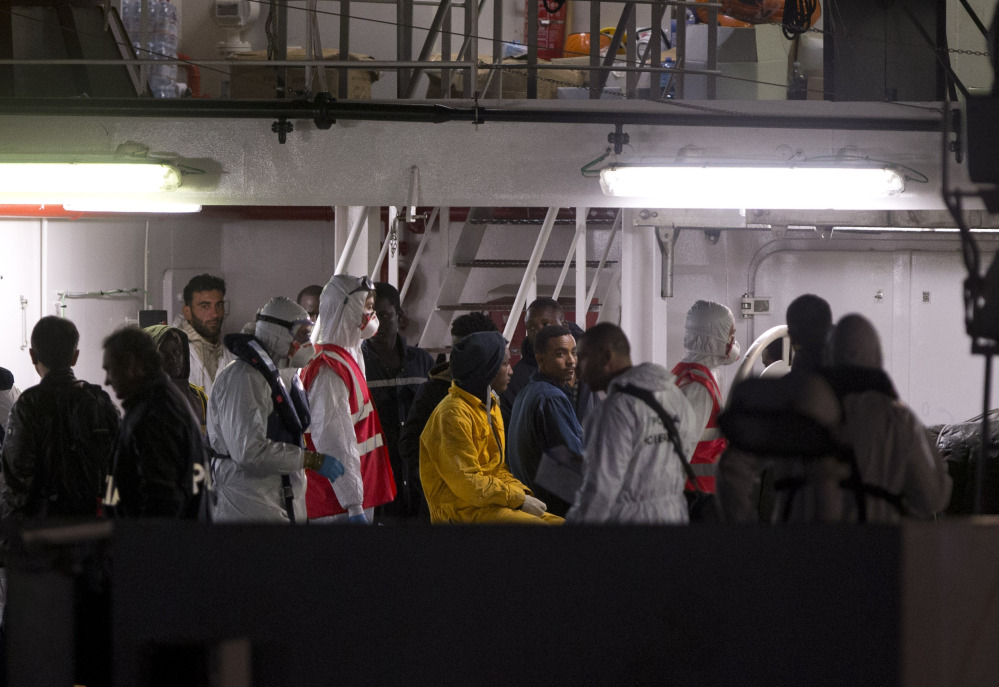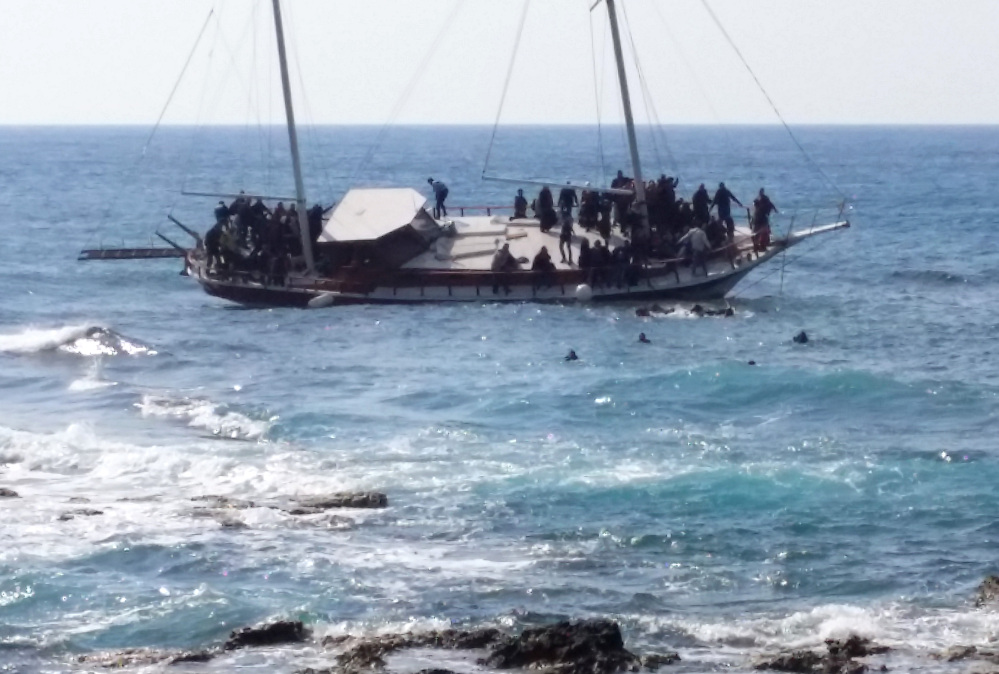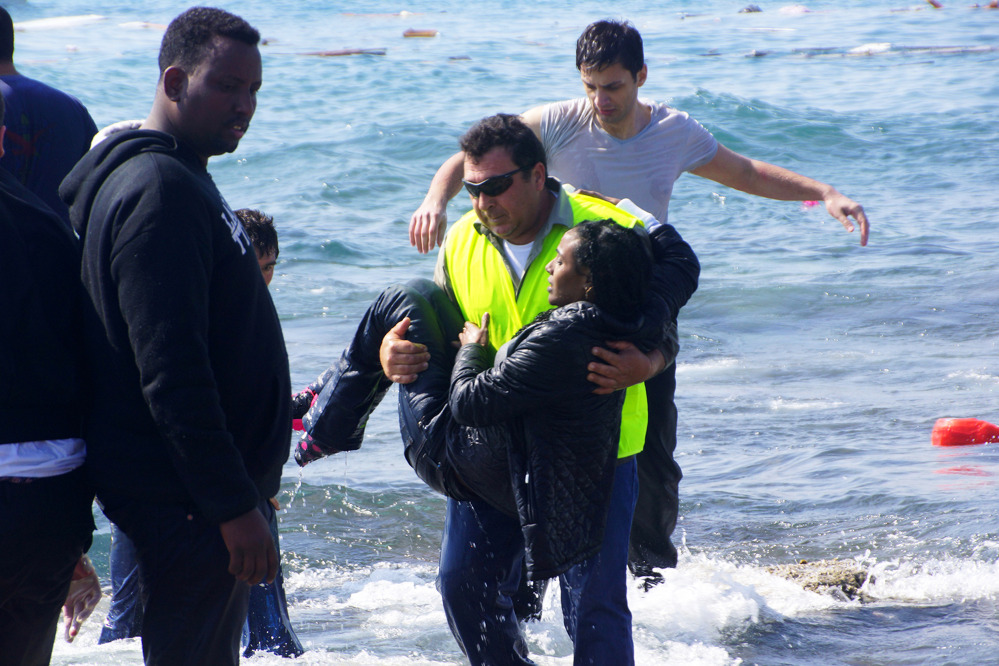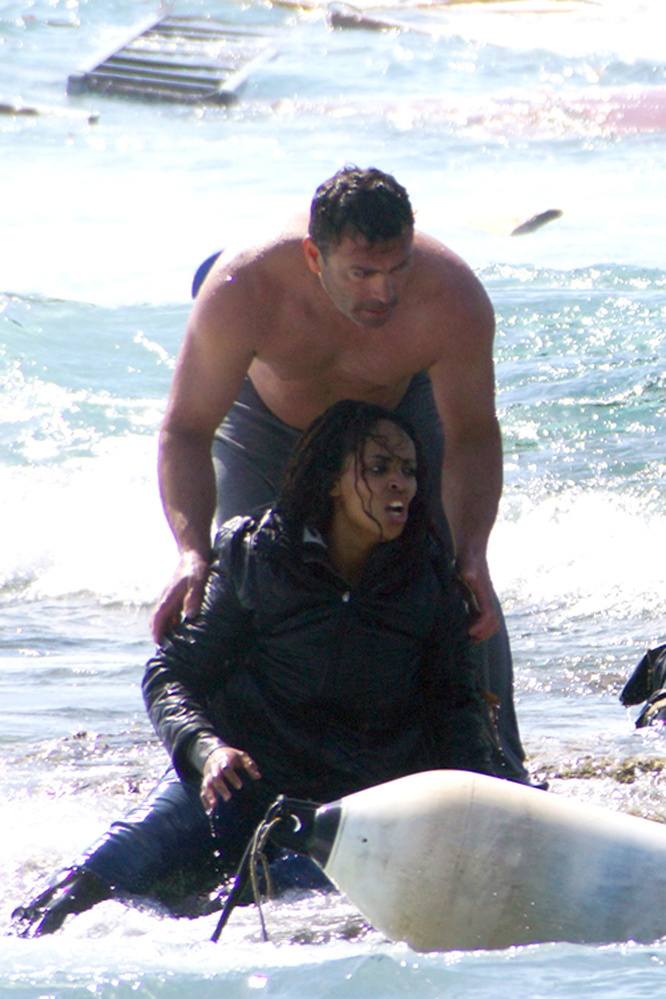MILAN — Shaken by the feared drowning of hundreds of people in the latest Mediterranean tragedy, European leaders struggled Monday for an adequate response in the face of unremitting migrant flows and continued instability in Libya that has given free rein to human traffickers.
Even as the search continued for victims of the weekend disaster that left as many as 950 people feared dead, coast guard ships rushed to respond to new distress calls on the high seas – two off Libya and a third boat that ran aground near Greece.
Decrying what he called an “escalation in these death voyages,” Italian Premier Matteo Renzi urged Europe to put the focus on preventing more boats from leaving Libya, the source of 90 percent of migrant traffic to Italy.
“We are facing an organized criminal activity that is making lots of money, but above all ruining many lives,” Renzi said at a joint news conference with Malta’s prime minister, Joseph Muscat. He compared their activity to that of slave traders of centuries past, ”unscrupulous men who traded human lives.”
The European Union foreign affairs chief, Federica Mogherini, said this weekend’s appalling human toll – which, if verified, would be the deadliest migrant tragedy ever – had ”finally” fully awakened the European Union to the evils of human trafficking.
The EU has been under increasing criticism for lagging in its response to the crisis, with two shipwrecks believed to have taken the lives of as many as 1,300 migrants in the past week. Some 400 people are believed to have drowned in another capsizing on April 13.
Stopping the traffickers will be a key item on the agenda when EU leaders meet in an emergency summit Thursday in Brussels, along with a proposal to double spending on sea patrols off Europe’s southern border. The 10-point plan includes a proposal to take “civil-military” action modeled on previous operations in the Horn of Africa to combat Somali piracy.
Meanwhile, new details emerged about the weekend disaster, with Italian prosecutors saying hundreds of migrants were locked below deck unable to escape when the rickety boat capsized off the coast of Libya.
Speaking at a news conference in Catania, Sicily, prosecutor Giovanni Salvi said “a few hundred were forced into the hold and they were locked in and prevented from coming out.” He said hundreds more were locked on a second level of the boat, which also had hundreds of migrants squeezed into its upper deck.
Salvi said the migrants rushed to one side of the boat as they saw a Portuguese-flagged container vessel approach, with the promise of rescue contributing to the disaster.
“Merchant ships don’t have adequate training for rescues in the seas,” Salvi warned. “The fact is, sea rescues are difficult and require professionalism. ”
As with most such high seas sinkings, a precise death toll will likely never be known. Only 24 bodies have been recovered so far and only 27 survivors were rescued. One survivor, identified as a 32-year-old Bangladeshi, has put the number of people on board at as many as 950, though Salvi said the survivor had no means to verify numbers. He said the coast guard estimated more than 700 people were on board.
Send questions/comments to the editors.






Success. Please wait for the page to reload. If the page does not reload within 5 seconds, please refresh the page.
Enter your email and password to access comments.
Hi, to comment on stories you must . This profile is in addition to your subscription and website login.
Already have a commenting profile? .
Invalid username/password.
Please check your email to confirm and complete your registration.
Only subscribers are eligible to post comments. Please subscribe or login first for digital access. Here’s why.
Use the form below to reset your password. When you've submitted your account email, we will send an email with a reset code.